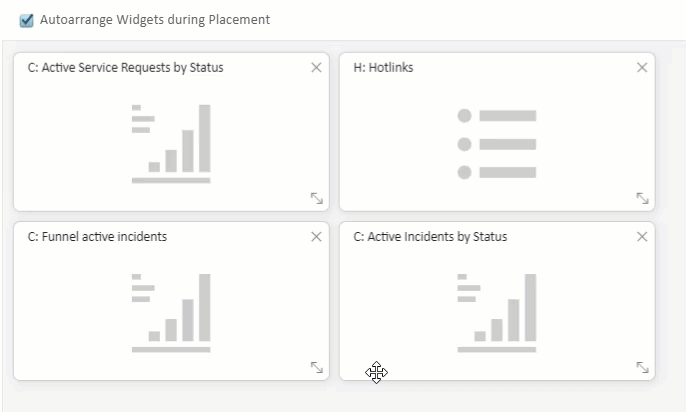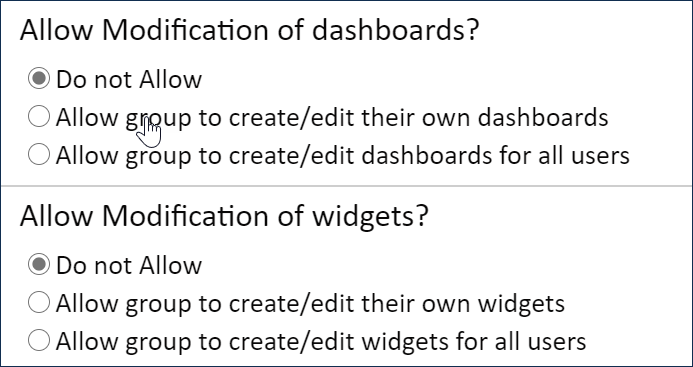Creating and Managing Dashboards
Easily access dashboards by clicking the logo in the top-left corner of the interface. You can also assign a dashboard to the Home item in the navigation menu for yourself and others, and even assign different dashboards to Home items in different nav bar groupings.
From there, you can use the drop-down arrow to switch between dashboards, or create and edit dashboards if you have permission.
Managing Dashboards
With a dashboard open, hover over the arrow next to the dashboard name to switch dashboards or, if you have permission, select New, Edit, Manage, or Manage widgets. Manage opens a list of all dashboards you have access to, while Manage widgets does the same for Dashboard Widgets.
To create or edit a dashboard:
- Click New to create a new dashboard
- Click Edit to edit the current dashboard
- Switch dashboards and click Edit to edit that dashboard
- Click Manage and then click New or select a dashboard and click Edit
To assign a dashboard to the Home tab on the nav bar, you can edit your own nav bar or change the settings for whole teams.
Creating and Editing Dashboards
Open the Dashboard wizard using one of the methods above.
- On the General tab, enter a title and description. Make sure the title is useful and clear without being overly long, since the title is visible to users when they have the dashboard open.
Use the Available and Selected widgets lists to control which Dashboard Widgets are included in the dashboard. Because each widget is calculated in real-time, it can become slow to load the dashboard if too many complex widgets are on the screen at once. Make sure to test your dashboard before making it widely available.
- On the Filters tab, you can add Dashboard Filters.
- On the Layout tab, configure the appearance of the dashboard. First, if you want to force the dashboard to fit on one screen, select the "Fit dashboard onto one screen" checkbox. In most cases, you should clear this checkbox to avoid the widgets becoming unreadable on smaller screens.
- For the Dashboard Background, select the default Look and Feel value or a custom style. The default style can be set in the Power User Look and Feel scheme using the Dashboard Background value on the Dashboards tab.
- Below, use the interactive tile grid to arrange the widgets. The grid automatically approximates the size of each widget and automatically snaps them together when the page resizes to avoid empty space. This means the rest of the widgets might respond to your changes as you make them. You can disable this behavior by clearing the Autoarrange Widgets during Placement checkbox.
- Click a widget from the Available Widgets list to add it to the grid.
- Drag the widget to the desired position.
Click the arrow icon in the bottom-right corner of the widget and drag to resize it.
The width of the widget grid represents the width of your screen, so if you leave any extra space on the right side of your widgets in this editor, you'll see that same empty space when you view the actual dashboard.
When you're satisfied with the layout, proceed to the Apply tab:
- Choose whether to keep the existing access settings or make the dashboard accessible to a new set of teams.
- Choose whether to make this dashboard the default for any new teams.
- Click Finish.
Dashboard Permissions
Dashboard views enforce user view permissions. If a user doesn't have view permissions for a table or field that is used in a widget, that content isn't included in the widget when that user views it on the dashboard. Instead, the widget shows a blank or null value.
The list of fields that are selectable for widgets are also limited by what the user is permitted to view. For example, when creating a Numerical Result widget, a user cannot perform calculations on a field unless they can view that field in all records, both their own records and the records of others.
The ability to create and edit dashboards and widgets is a group permission that can be configured in the General tab of the Manage Groups wizard.



